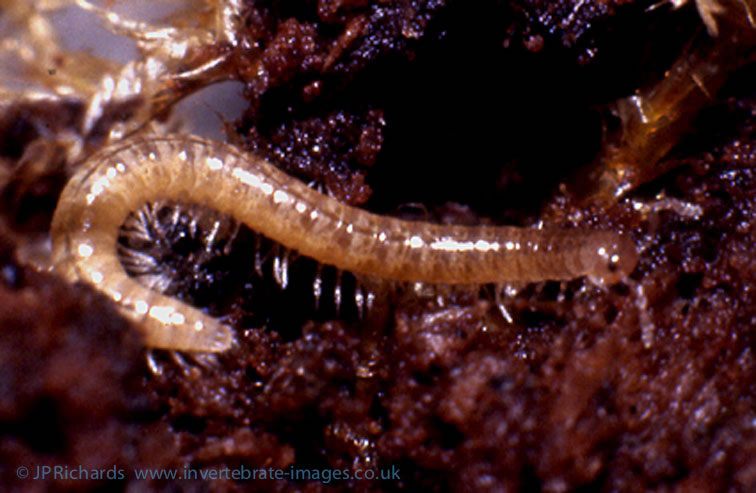Melogona scutellaris (Ribaut, 1913)
Synonyms
Status:
GB IUCN status: Least Concern
ID Difficulty
Identification
A creamy-white millipede reaching 8mm in length, with eyes comprising a patch of ommatidia arranged in an acute triangle. It is similar in appearance to Melogona gallica and Melogona voigtii, but differs in its paler colour, its smaller size and having just 28 body rings when adult (30 rings in adults of other Melogona spp., and all other British Chordeumatid millipedes).
It is most reliably identified by examination of adult male gonopods or adult female vulvae (see Enghoff, 2016 or Gregory & Garnham, 2020)).
Distribution and Habitat
This is a widespread species in Britain and Ireland but it appears to be absent from East Anglia and is generally more common in the north of England than the south. It also seems to be absent from much of the north of Scotland despite considerable effort to find the animal there (Gordon Corbet, pers. comm.).
Although typically found in woodlands (56% of records), it also occurs in more open and in disturbed habitats including gardens. Analysis of the habitat data shows no strong relationships with any habitat type. Nor does the analysis suggest a preference for a particular soil type or acidity but there is a surprisingly strong association with suburban sites. The European distribution of the species is discontinuous. It appears to be most common in Britain and Ireland with a few records from the Alps and the Pyrenees (Kime, 2001) and a single one from Belgium (Van Den Haute, 1999). Blower (1979) found the species has an annual life cycle with adults appearing by October in south Wales and slightly later in the year further north in Derbyshire. He recorded population densities of up to 64 per square metre in south Wales and up to 109 per square metre in Derbyshire. Adults have been found from September through to May but are most frequent in the winter and early spring.
This species account is based on Lee (2006).





